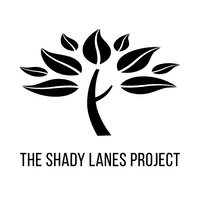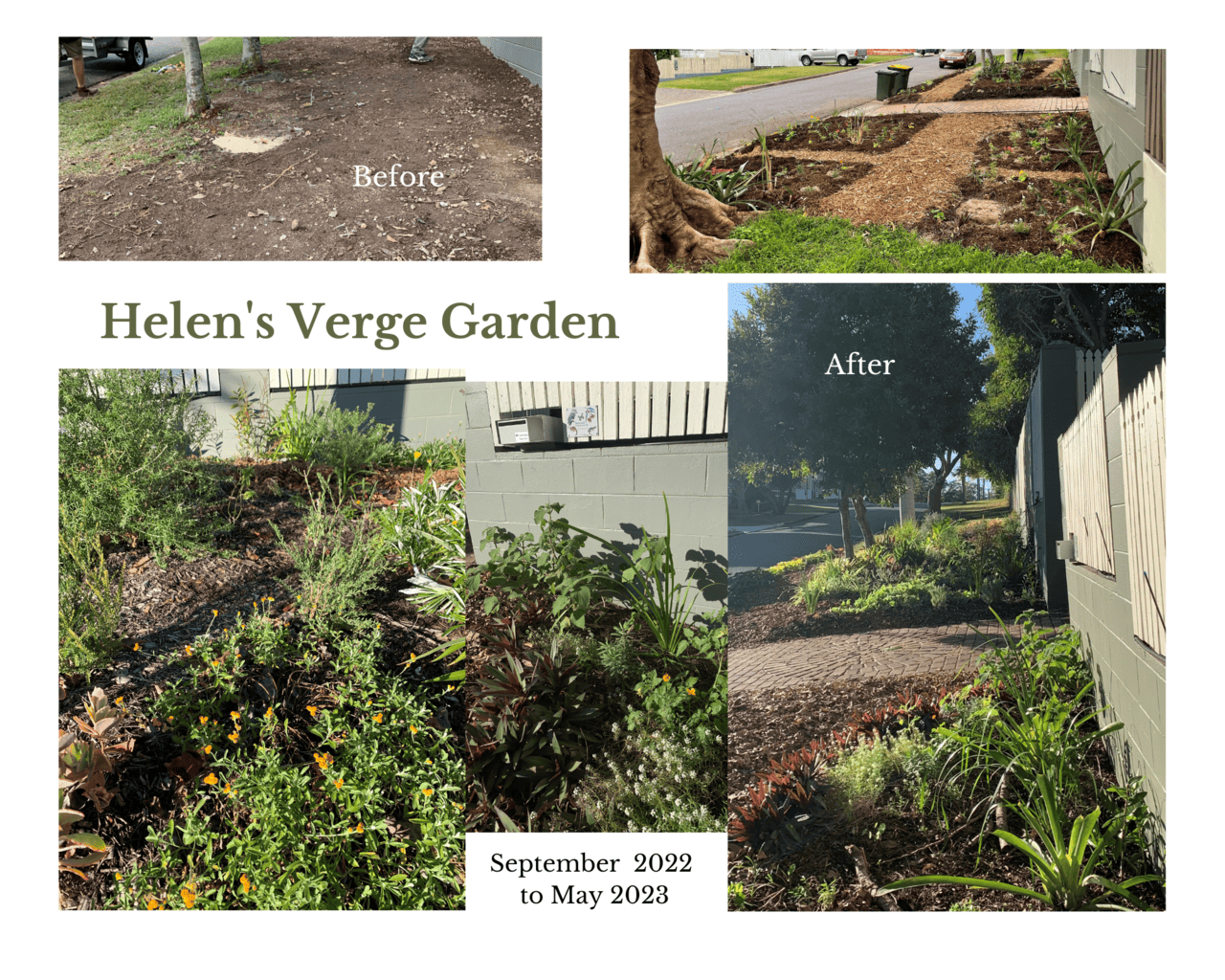Verge garden for biodiversity and an improved street scape in Alderley, Brisbane
I’m Helen and I live in Alderley, South East Queensland. In September 2022 I fulfilled a long-held dream of creating a verge garden outside our property in Alderley. We see the verge as common land, land where we are the current custodians, in partnership with our community and with the Brisbane City Council (BCC).
What had held me back?
The historic BCC policies made verge gardening difficult, and even when the new guidelines came out, my work commitments had me interstate and working long hours. Last year, these obstacles had largely gone. After our front retaining wall was repaired, we were faced with bare dirt across most of the verge. So, I created the verge garden. And with the state that the ground was in, this was one time where a “big bang” approach made sense. I also knew that I had one good wet season ahead to help establish the garden.
The process I took:
- Getting the soil tested. The results came back with very low levels of anything that may be considered toxic. This gave me options for potentially growing edibles.
- Consulting with council to ensure that we correctly understood the guidelines. See also below on this.
- Writing to people on our street to let them know what we were planning, and to invite conversations about any concerns that they might have. We got good feedback on this.
- Marking out the underground services. We already knew where gas, storm water and sewerage were, thanks to the recently completed building works.
- Improving the base soil. We had compost delivered, and covered the planting areas with this plus a mulch. We covered all the services and pathways with a lighter coloured mulch, to make these areas clearly defined. An arborist was assisting us with some tree work in our back garden, and we used the mulch from that work.
- Protecting the mulch on a slope with a natural-fibre erosion control blanket. This may not have been required, but we wanted the space to stay neat and tidy, and we knew that we had a good wet season forecast that might have washed away mulch before the plants had naturally anchored it down.
- Purchasing 40 tube stock plants that are indigenous to SE Queensland from Paten Park nursery. Sourcing free council plants from friends and family who didn’t want to use their annual allocation. Once I started work, friends and people from the neighbourhood were very generous with their donations – all of which we accepted.
What about accessibility?
- We had more than one conversation with BCC checking on how to establish pathways. Our preference was to have a stable pathway to be accessible for a wide variety of users. We wished to use the area’s naturally occurring decomposed granite to establish pathways that would be accessible. We were happy to use concrete or pavers if this were a better outcome. The council was very clear that we were to use none of these options, and directed us to use mulch instead. Whilst we do not think this is the best option, we note that the poinciana tree roots on the verges on this side of our street mean that the verge was not accessible to many people before we started in any case. Should the BCC rules change, we will be very happy to improve this.
At 70sqm, this doubled the land that I garden. So, why did I do this?
- We never have to mow again. The time saved is immense! Now that the garden is established (8 months on), it is very little work.
- The garden has improved the streetscape – we get regular compliments from people passing by.
- We have improved the biodiversity on this patch of land. A variety of native bees, other insects, reptiles and birds have visited.
The benefit that we hoped for but weren’t sure what to expect is that of building local community. We have many more interactions with the local community, including a number of “regulars” who chat about the garden’s progress, stop to admire a flower, or bring their dogs for an interesting spot to walk and have a sniff. Children have come with plants, have “borrowed” succulents for gift projects, and have been given bunches of flowers.
What is growing well?
- Tubestock of natives and the free council plants have largely done very well, and I have been tip-pruning to encourage compact growth. Stand outs include a range of grasses and sedges, midjimberry, melaleuca thymifolia, westringias, koalas bells.
- Cosmos, alyssum were grown from seed and added prettiness through the summer as the garden established.
- African daisies, crucifix orchids, moses-in-the-cradle and striped spider plants were donations that filled spaces and added colour.
- Sweet potato cuttings are hardy for along the edge of the road. We offer the leaves as guinea pig food. I take cuttings from these to re-plant my backyard veggie patch as needed.
As the natives grow and are added to, I am gradually changing the mix of plantings in their favour. I am also going to sow more flower seeds, as the flowers have a lot of good feedback from the local community.

